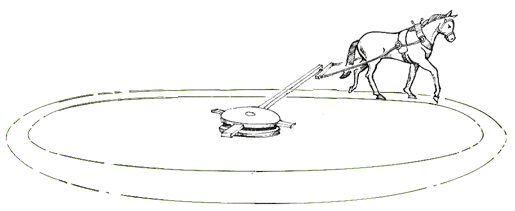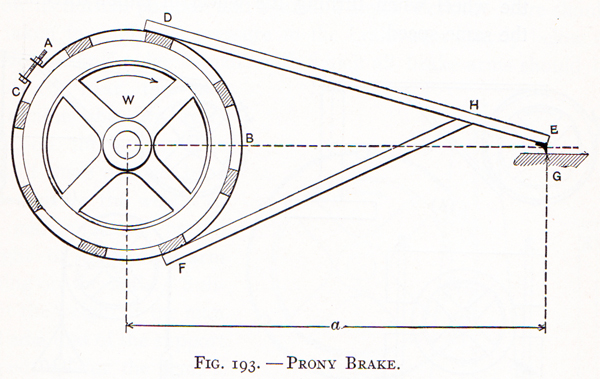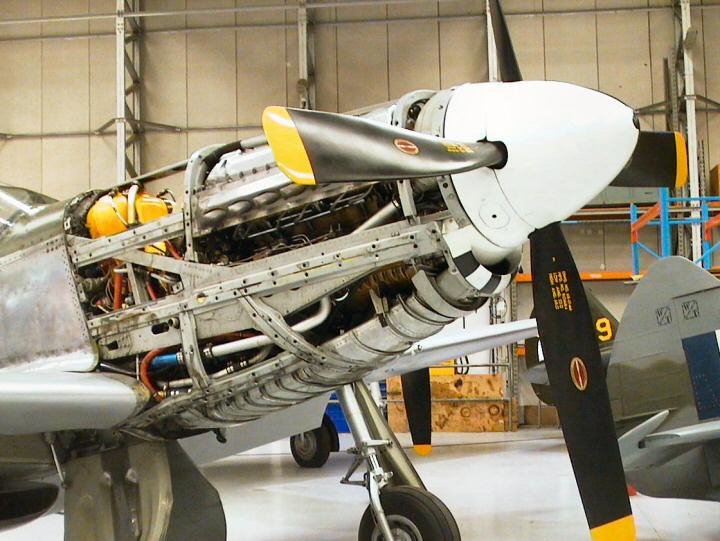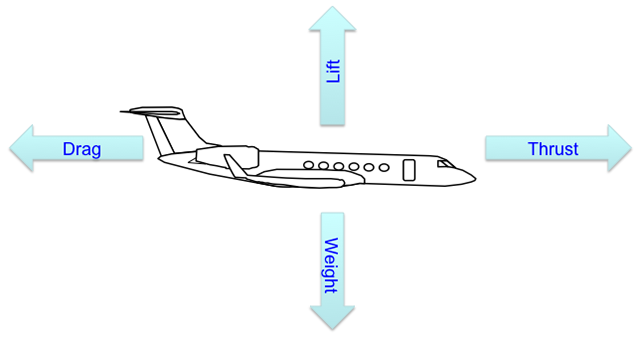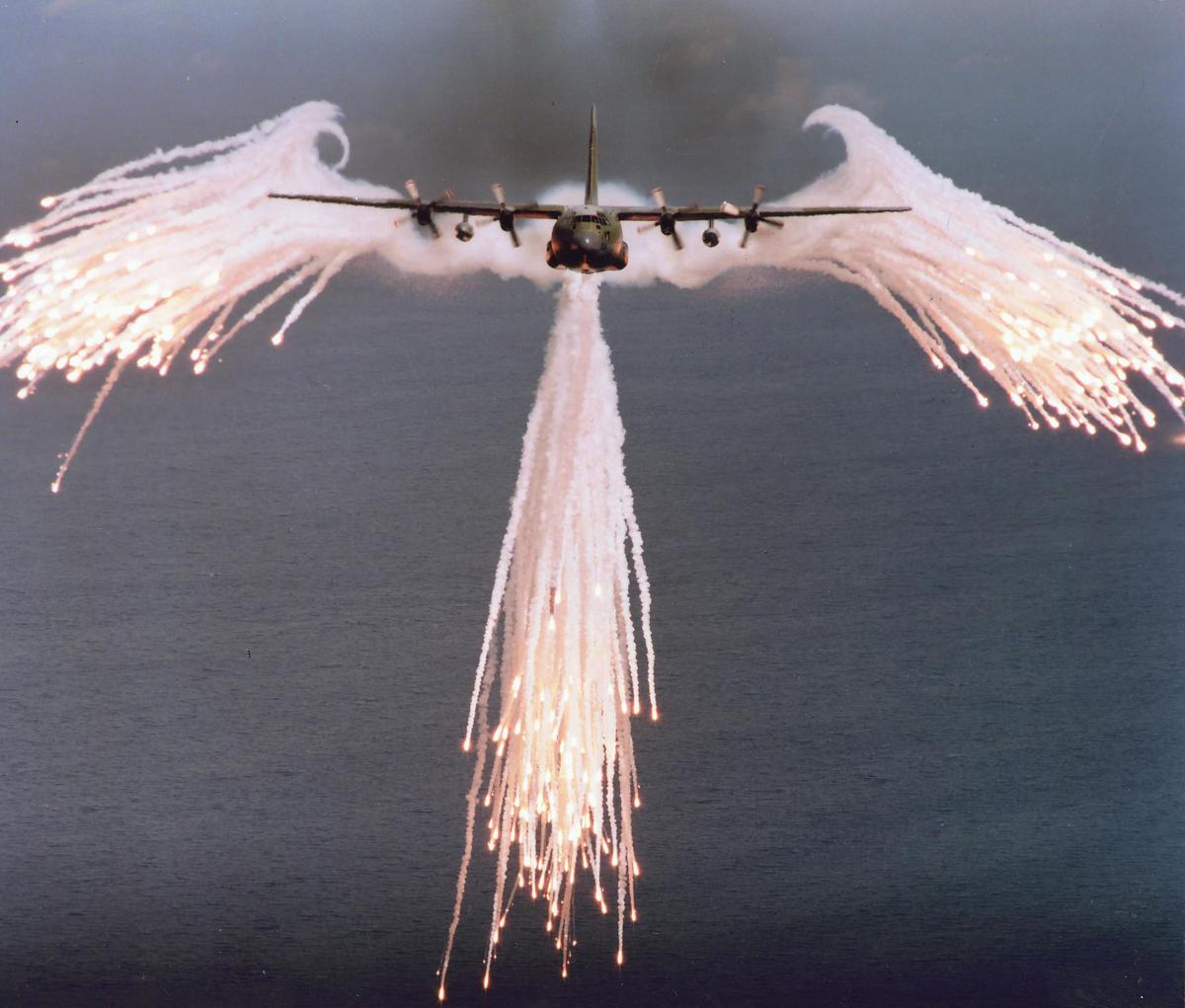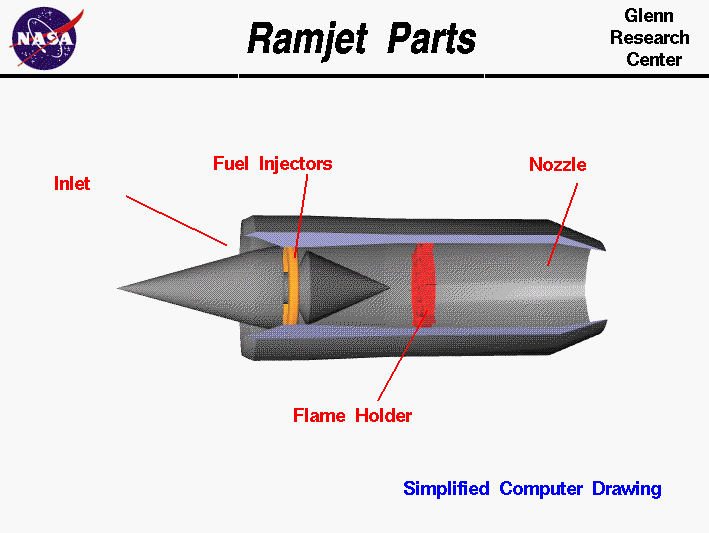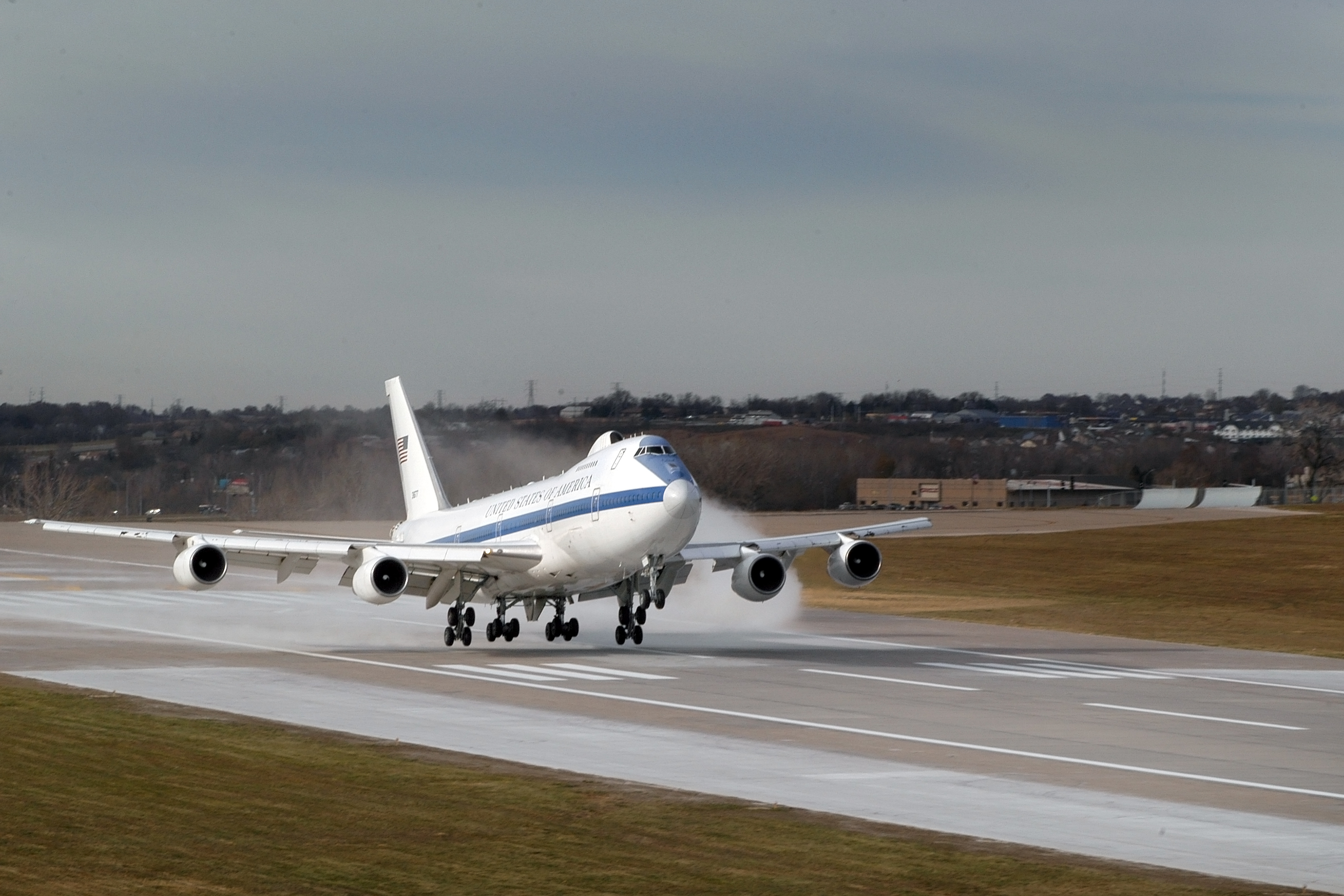We pilots tend to get pretty lazy when it comes to units of measure. When asked about our cruise speed we cavalierly say "eight oh" when we should be saying "Mach Decimal Eight Zero." But so it goes.
— James Albright

Updated:
2013-09-08
The worst offense, says the engineer in me, is when we talk about power. A jet engine doesn't have power, it has thrust. A propeller airplane doesn't really have horsepower either, it has equivalent shaft horsepower. In the G450 we don't have throttles because we don't have carburetors with throttles so what we have are called power levers. But we don't really have power for those levers to regulate. Really we should have thrust levers.
You don't need any of this to fly your jet. But understanding how your engine's thrust is measured might come in handy.
Oh yes, most of this comes from my notes from freshman physics at Purdue but I did lean heavily on the references listed at the bottom of the page.

1
Definitions
Work
Work requires that a force must move an object in the direction of the force:
Work = force x distance
Work is measured in ft-lb.
Source: Dole, pg. 8
Energy
Energy is the ability to do work and comes in many forms, such as solar, chemical, or heat. In aviation we are interested in mechanical energy which has two forms:
- Potential Energy of Position, or simply put Potential Energy (PE). It can be termed as the weight of an object (W) times the height (H) of the object over some base plane:
- Kinetic Energy (KE) is the energy resulting from the movement (V) of a mass (m):
PE = Wh
KE = 1/2 mV2
The total mechanical energy TE of an object is:
TE = PE + KE
Source: Dole, pg. 8
Horsepower
James Watt used an existing idea of comparing the output of machines to that of horses to help market his improved steam engine. Watt determined that a horse could turn a mill wheel 144 times in an hour (or 2.4 times a minute). The wheel was 12 feet in radius; therefore, the horse traveled 2.4 × 2π × 12 feet in one minute. Watt judged that the horse could pull with a force of 180 pounds. So:
From this point on, a horsepower was considered to be 33,000 ft-lb/min, or 550 ft-lb/sec.
Power
Power is defined as the rate of doing work:
But since distance / time = velocity:
Power = force x velocity
Since 1 horsepower = 550 ft-lb/sec, a formula for horsepower can be found to be:
Since there are 6076 feet in a nautical mile and 3600 seconds in an hour, the equation can be rewritten using knots for velocity as such:
Source: Dole, pg. 9
Brake horsepower (BHP)
Gaspard de Prony, a French engineer, came up with a way to measure engine performance in 1821 by wrapping a cord or belt around the output shaft and measuring the force transferred to the belt by friction.
Brake horsepower is the horsepower measured at the crankshaft (piston engines) or at the turbine shaft (turbine engines).
Source: Dole, pg. 99
Shaft horsepower (SHP)
Shaft horsepower is less than the BHP because of gearing losses in reducing engine RPM to propeller RPM. It is measured at the propeller shaft.
Source: Dole, pg. 99
Thrust horsepower (THP)
Thrust horsepower is the usable horsepower. It is less than the SHP because of propeller efficiency loss. Do not confuse THP with thrust. Thrust horsepower is a type of horsepower and must be converted to thrust units as follows:
Source: Dole, pg. 99
Equivalent Shaft horsepower (ESHP)
Turboprop aircraft produce both power and thrust. The amount of thrust produced directly is only about 15% of the total. They are, therefore, classified as power producers. The amount of thrust that they produce is converted into horsepower units and added to the shaft horsepower. The result is called equivalent shaft horsepower:
Source: Dole, pg. 99
Thrust
Thrust, as you already know, it is simply the reaction force described by Newton's Second and Third Laws of Motion:
Second law: The acceleration of a body is directly proportional to, and in the same direction as, the net force acting on the body, and inversely proportional to its mass. Thus, F = ma, where F is the net force acting on the object, m is the mass of the object and a is the acceleration of the object.
Third law: When one body exerts a force on a second body, the second body simultaneously exerts a force equal in magnitude and opposite in direction to that of the first body.
2
Power-producing aircraft
All aircraft must produce thrust to overcome the drag of the aircraft. In turbo-jets and other thrust-producing aircraft this thrust is produced directly from the engine. In aircraft that have propellers (or rotors), the engine does not produce thrust directly. These aircraft are called power producers because power turns the propeller. The propeller, in turn, develops an aerodynamic force when it is turned through the air; this force is thrust.
- Power producing aircraft have a flatter thrust required curve than thrust-producing aircraft; they can operate near the stall without requiring extremely high power settings.
- Turbine engines are most efficient at high RPMs; reciprocating engines are most efficient at lower RPMs.
Source: Dole, pg. 94
3
Thrust-producing aircraft
Turbojet, ramjet, and rocket-driven aircraft are examples of thrust producers.
F = T = Q (V2 - V1)
Where T = thrust (lb)
Q = mass air flow
V1 = inlet velocity (fps)
V2 = outlet velocity (fps)
Source: Dole, pg. 68
Turbojet aircraft are rated in terms of static thrust. The aircraft is restrained from moving and the thrust is measured and converted to standard sea level conditions.
- The thrust output of an engine can be increased by either increasing the mass airflow or increasing the exit velocity/flight velocity ratio.
- The thrust available is nearly constant with airspeed.
- Thrust varies with RPM but the reduction of thrust is not linear with the reduction in RPM.
- Thrust is reduced with an increase in altitude.
- Lower temperature improves efficiency.
Source: Dole, pg. 71
4
Turbo-fan aircraft
What of a turbo-fan aircraft? The CF-6 on this B-747, for example, is said to bypass 85% of its inlet air around the inner cowl, where the real jet of the jet engine is said to be. Does that mean it is 85% fan and 15% jet? Not at all. In fact, the power and/or thrust isn't measured that way at all. Just as defined for a thrust-producing aircraft, the engine's thrust is measured in static conditions and so is given in units of pounds of thrust. (65,000 lbs of thrust per engine, as a matter of fact.) But what does that mean? See this story demonstrating 58,000 lbs of thrust: Jet Blast.
References
(Source material)
14 CFR 25, Title 14: Aeronautics and Space, Federal Aviation Administration, Department of Transportation
Air Training Command Manual 51-3, Aerodynamics for Pilots, 15 November 1963
Connolly, Thomas F., Dommasch, Daniel 0., and Sheryby, Sydney S., Airplane Aerodynamics, Pitman Publishing Corporation, New York, NY, 1951.
Davies, D. P., Handling the Big Jets, Civil Aviation Authority, Kingsway, London, 1985.
Dole, Charles E., Flight Theory and Aerodynamics, 1981, John Wiley & Sons, Inc, New York, NY, 1981.
FAA-H-8083-15, Instrument Flying Handbook, U.S. Department of Transportation, Flight Standards Service, 2001.
Gulfstream G450 Aircraft Operating Manual, Revision 35, April 30, 2013.
Hage, Robert E. and Perkins, Courtland D., Airplane Performance Stability and Control, John Wiley & Sons, Inc., 1949.
Hurt, H. H., Jr., Aerodynamics for Naval Aviators, Skyhorse Publishing, Inc., New York NY, 2012.
Technical Order 1T-38A-1, T-38A/B Flight Manual, USAF Series, 1 July 1978.
Please note: Gulfstream Aerospace Corporation has no affiliation or connection whatsoever with this website, and Gulfstream does not review, endorse, or approve any of the content included on the site. As a result, Gulfstream is not responsible or liable for your use of any materials or information obtained from this site.
